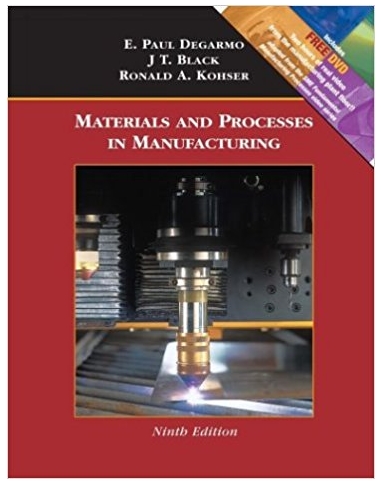The interior tub of a washing machine is the container that holds the clothes during the washing
Question:
This part has traditionally been manufactured by the deep drawing, perforating and trimming of metal sheet, followed by some form of surface-coating treatment. For a long time, the standard material was "enameling iron"-a steel sheet with less than 0.03% carbon-which was then coated with a fired porcelain enamel. Due to the difficulties of producing ultra-low-carbon material in today's steelmaking operations, enameling iron became increasingly scarce, and manufacturers were forced to substitute the lowest-carbon, most readily available material, namely 1008 steel. This substitution further required modification of the enameling process to prevent CO and CO2 blistering.
Your employer is presently manufacturing these tubs from 1008 steel sheet with a subsequent coating of fired porcelain enamel. Your marketing staff, however, reports that consumers tend to view a stainless steel tub to be of higher qualify. As a result, your supervisor has asked you to evaluate the merits of converting to this material. You must first familiarize yourself with the current product (the base material, the forming process, and the porcelain enameling), and then determine what might be involved in converting it to stainless steel. Consider the following specific questions:
1. What are the obvious pros and cons of the present product and process? Where would you expect most problems to occur in the manufacturing process? Which aspects of fabrication are likely to be the most costly?
2. What would be the pros and cons of converting to stainless steel? In what ways would the product be superior? Are there any assets or liabilities associated with product fabrication?
3. Which stainless steel would you recommend? Begin by considering the basic types (ferritic, austenitic, and martensitic) and then refine your selection to a specific alloy if possible. Discuss the rationale for your selection.
4. Since deep drawing is a metal-deformation process, we could use cold working (strain hardening) as a strengthening mechanism. Would you find this to be attractive, or would you prefer to use a recrystallization anneal after drawing and prior to use? Why? If you elect to use cold work, might you want to at least perform a stress-relief heat treatment prior to use? Could this be done and still preserve the deformation strengthening? In deep drawing, the deformation is not uniform (increasing as we move up the sidewalls of the container), and the bottom of the tub will simply retain the properties of the starting sheet. In order to assure a minimum amount of strength at all locations, it may be desirable to begin the drawing with a partially cold-rolled sheet. Do you find this suggestion to be desirable? Why or why not?
5. After drawing and perforating, the residual drawing lubricant is removed from the part. Would any additional surface treatment be required? What would be your recommendation?
Fantastic news! We've Found the answer you've been seeking!
Step by Step Answer:
Related Book For 

Materials and process in manufacturing
ISBN: 978-0471656531
9th edition
Authors: E. Paul DeGarmo, J T. Black, Ronald A. Kohser
Question Posted:





